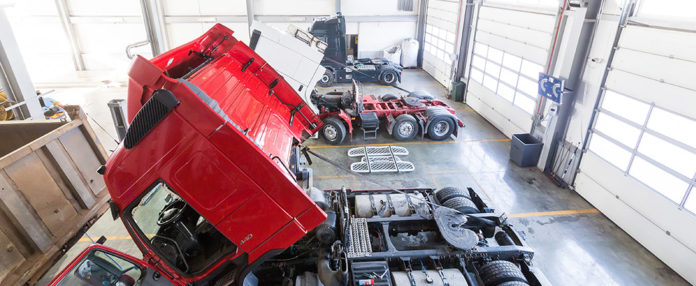The heavy-duty diesel engine oil market is gradually shifting to lower-viscosity products, with advancing technology and better understanding of their benefits making them more available for use by more truck fleets, industry speakers said during a webinar Tuesday.
For decades, SAE 15W-40 oils in heavy-duty market and SAE 10W-30 in the passenger car motor oil market were the “kings” of lubricant viscosities, Petro-Canada Lubricants Original Equipment Manufacturer Technical Liason Darryl Purificati said during an event hosted by fleet business news publication Heavy Duty Trucking.
“The passenger car industry started to transition – first to [SAE] 5W-20, then to 0W-20 – starting a couple decades ago or so,” he added. Over the past few years, he said, the market has introduced even lighter oils, including SAE 0W-16, SAE 0W-12 and SAE 0W-8.
Purificati noted that in the heavy-duty market, SAE 15W-40 was the clear leader for many years. More recently a transition towards SAE 10W-30 has taken place, he said, and slowly but surely a move has occurred towards the latest API FA-4 diesel engine oil category and lower-viscosity SAE 10W-30 oils.
Demand is now shifting towards even lighter oils that meet three key needs for heavy-duty truck fleets. “The latest engine architecture has tighter clearances, and therefore requires thinner lubricants that can flow more easily around the engine to key components,” he said. “Secondly, a lower viscosity will improve efficiency by reducing viscous drag on moving parts, which enables the oil to flow more efficiently through the engine, and in turn improves fuel economy.”
Fuel expenses are a considerable outlay for heavy-duty fleets, he noted, accounting for up to 30% to 40% of a company’s overall cost. “This means that any reduction in fuel consumption can be extremely important with even small decreases having an impact on a business’s bottom line,” he added.
The third need relates to colder climates. “These oils can also decrease the warm up time of engines, which offers superior protection for fleets operating in colder climates,” he explained.
Purificati noted that engine oil development lately was largely driven by environmental legislation, such as the Clean Air Act in the United States, which among other things aims to reduce emissions of air pollutants from vehicles. “To do this, OEMs responded with engine hardware improvements to meet emissions regulations and lubricants needed to adopt to meet the specific needs of OEM engine design, such as metallurgy and a more compact design,” he said. “As well as enhance the engine’s overall efficiency.”
Purificati said one of the most significant recent developments in the industry was the transition to lubricants meeting the latest API CK-4 and FA-4 diesel engine oil standards. “As expected, the transition to CK-4 has been successful,” he said. “This was because the industry was well prepared and invested in education and clear communication around the change. CK-4 engine oils are backwards compatible, they offer enhanced protection against oxidation and viscosity loss due to shearing and oil aeration to deliver better engine performance.”
He noted that its counterpart, the API FA-4 category, had an expectedly slower adoption process. “FA-4 engine oils are not interchangeable with older oils and have limited backwards compatibility with older engines, as they’re designed to enhance the performance of the latest engine designs,” he explained. “In fact, when recommended by the OEM, the use of an FA-4 oil can offer up to a 1% fuel economy benefit over CK-4 oils while maintaining the same superior engine protection.”
The timeline for each OEM coming on board for a new engine oil category is different, he noted. “For example Detroit Diesel was the first when FA-4 was launched, and others are just now starting to come on board,” he said. “FA-4 adoption is expected to increase over the coming years, and begin to gather pace as OEMs increasingly specify these lubricants for their vehicles.”
Although SAE 15W-40 is expected to remain the most widely used viscosity grade in the heavy-duty segment in the coming years, he said, its share has started to decline, with SAE 10W-30 now the fastest growing viscosity grade in the segment. “It has more than tripled in demand since just 2010,” he added. Acceptance of SAE 10W-30 that meets API FA-4 requirements will be slow, “but demand is expected to continue to increase steadily into the next decade,” he said.
PC-12, the next heavy-duty engine oil category in North America, is not expected until approximately 2027. “PC-12 will be developed based on phase 3 of the greenhouse gas emissions regulations from the Environmental Protection Agency and the California Air Resources Board,” Hetherington said. “The EPA and CARB announcement is yet to be made; however, we can expect even lower viscosity grades, such as the [SAE] 5W-30 or XW-20s as we continue the trend towards these lower viscosities.”
Purificati said that reaching the next frontier for heavy-duty engine oils, while awaiting the next PC-12 category, means continuing to develop lower-viscosity oils. “We can target the lowest-viscosity oil possible while maintaining boundary lubrication within the engine,” Purificati said. “The challenge is to maintain, even improve all other performance characteristics of the oil, resulting in overall goal of improved engine efficiency.”
